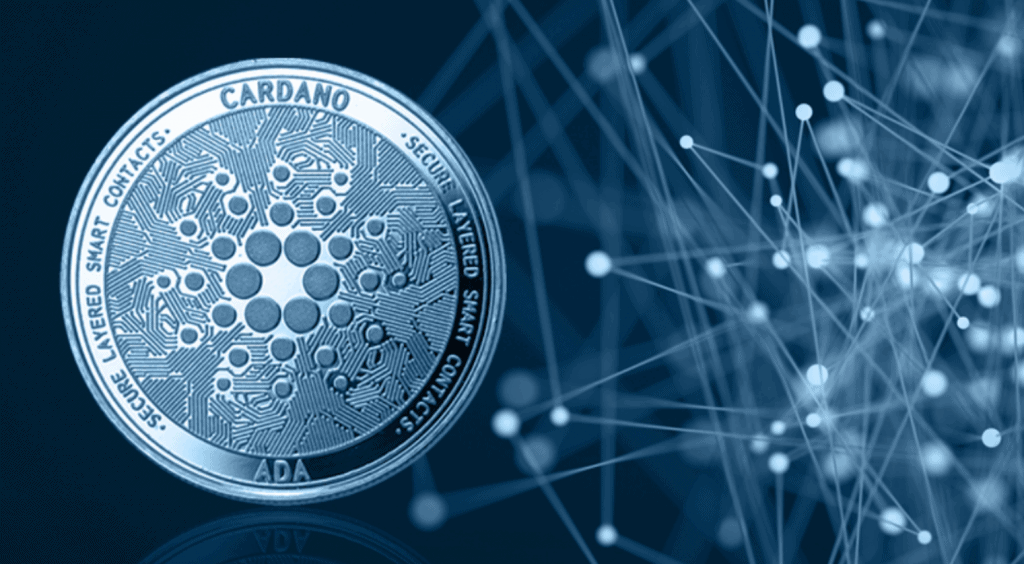The Complete Introductory Guide to Cardano
Cardano is a household name in the cryptocurrency space. CoinMarketCap lists Cardano as the sixth most-valuable cryptocurrency with a market capitalization of over $32 billion. About a year ago, Cardona’s native token: ADA, was selling for $0.02, but now it has hit the $1 mark and is still rising.
For more than a decade, the crypto market has been dominated and largely dictated by two heavyweights, namely, Bitcoin and Ethereum. Bitcoin is considered by many as the ultimate blockchain-based digital asset while Ethereum is the go-to platform for developing decentralized decentralized applications (dApps).
The sheer number of applications on the Ethereum blockchain has its disadvantages, one of them being excessive transaction fees, also known as gas fees during peak periods.
Cardano presents itself as an alternative to Ethereum.
An ambitious blockchain project with a team of engineers, academics and, of course; Charles Hoskinson, the co-founder of Ethereum. The team worked together to create a system more sustainable than other blockchains available.
About a year ago, Cardano’s native token: ADA, was selling for $0.02 per token, but right now it has breezed past $1. This probably makes you wonder, “What’s the deal with this Cardano?”
Well, the Finvesting.net team created this guide to introduce Cardano, and help you understand how this blockchain platform works.
What Is Cardano?
Cardano is an open-source blockchain project that allows developers to build applications that are scalable and secure. The system is built to enable the development of smart contracts.
The Cardano blockchain runs on a proof-of-stake consensus algorithm, enabling visionaries to create blockchain applications that bring about positive global change.
Cardano, unlike other blockchains, is one of the utilitarian projects aiming to make the world a better place.
The project was created by a team of not just engineers and programmers but also academics, headed by Charles Hoskinson. Hoskinson had left his post as the co-founder of Ethereum after an argument about keeping the platform non-profit.
The idea to create Cardano was conceived in 2015 by a group of individuals and organizations; the most prominent among them are the Cardano Foundation, Emurgo, and IOHK (Input-Output Hong Kong).
These companies joined forces to achieve one aim: protect and promote the Cardano protocol, build technology that makes the world a better place and support developers who want to create these utilitarian technologies.
According to the founder of Cardano, Bitcoin was too slow and rigid, while Ethereum suffers numerous performance issues and, as a result, isn’t scalable. In 2017, the Cardano blockchain platform was officially launched. The name Cardano, however, is a symbolic one. The platform was named after the Italian mathematician Gerolamo Cardano while the native token ADA was coined after Augusta Ada, the British Mathematician considered to be the first-ever computer programmer.

How Cardano Works?
Cardano aims to handle the infrastructure and scalability issues affecting both the Bitcoin and Ethereum blockchains.
It works by following a scientific approach to blockchain development, which is a first of its kind in the industry. The platform is also peer-reviewed, thanks to an experienced team of academics and engineers.
The Cardano blockchain is superior to any other blockchain because of its different approach and model. You see, the blockchain has two layers: the settlement and computational layer. The settlement layer enables users to send and receive ADA from one wallet to another. The computational layer allows users to initiate smart contracts on the network.
The great thing about the way Cardano works is smart contracts can be modified to fit the needs of the end users. Smart contracts can be created to comply with the financial regulations of different countries without affecting the design of the native token, ADA. This is because smart contracts are developed on the computational layer while sending and receiving tokens take place on the settlement layer.
The Cardano team can also make changes using soft forks on the computational layer without accidentally disrupting the logic in the settlement layer which facilitates the sending and receiving of ADA tokens.
This two-layer technology has several benefits, which is why the Cardano blockchain is considered superior to the Ethereum network.
Cardano’s Consensus Protocol
Cardano uses the Ouroboros proof of stake model for its consensus algorithm. According to their website, the Ouroboros protocol is “an environmentally sustainable, verifiable secure proof of stake protocol with rigorous security guarantees.”
The Ouroboros protocol is a hybrid, in a manner of speaking. It provides the security guarantees of a PoW consensus model combined with the energy-efficiency of a PoS model. The PoS model has proven to be a slightly better consensus model. It uses less energy when compared to a PoW model, but offers fewer security guarantees. The hybrid Ouroboros protocol aims to solve that.
According to Cardano’s website, Ouroborous uses cryptography, combinatorics and mathematical game theory to match the level of data integrity a PoW algorithm offers.
Cardano: A third-generation blockchain
A third-generation blockchain employs much more advanced technology than the first and second-generation blockchains. The Bitcoin blockchain is generally regarded as the mother of all blockchains; the first-generation blockchain.
Ethereum is considered a second-generation chain. Charles Hoskinson, a co-founder of Ethereum recognized that second-generation blockchains still have many problems that will hinder their growth in the long run.
His disagreement with how Ethereum was supposed to be developed pushed him out of the company and led him to create Cardano. Cardano solves the problem of sustainability, security, and scalability. It’s worthy of mention that these are issues experienced by first and second-generation chains.
Cardano’s Native Token, ADA
Cardano, just like Bitcoin, has a finite supply of its native tokens. While Bitcoin has a total supply of 21 million BTC, ADA is capped at 45 billion tokens.
ADA is Cardano’s native token and used for peer-to-peer transactions on the platform and for staking. Holders of the token will act as validators on the platform; holders function as staking nodes, due to the PoS protocol.
At the time of writing, 1 ADA equals $1.06, a monumental increase in price from a year ago when it was worth below a cent.
Why Cardano is the Future of Smart Contract Platforms
Cardano is the future of blockchain and smart contracts for so many reasons. Here are the most important ones:
Improved Security
Cardano promises to be more secure than any blockchain network available. This is powered by the Ouroborous consensus protocol that employs cryptography and mathematical game theory.
This gives the platform integrity like never seen on any blockchain platform in existence.
Better Performance and Scalability
The current crop of blockchain systems isn’t sustainable for mainstream crypto adoption. Ethereum, for example, processes a meager 15 transactions per second (TPS).
For crypto to attain mainstream adoption, a higher transaction speed is required. Cardano can process up to 257 transactions per second.
This is still short of the transaction speed of centralized payment technologies. For instance, VISA runs through over 1700 transactions per second.
Energy-efficiency
The Ouroborous PoS mechanism assures even more energy efficiency when compared to the PoS protocol of other blockchain networks, or the PoW protocol of the Bitcoin blockchain.
For a clearer idea, picture a country’s overall energy consumption, then compare it to a single household’s.
Interoperability
Cardano’s set its sights on creating a link or network where every coin in existence (thousands of them) can interoperate. This would ultimately lead to seamless and more efficient transfer of value between blockchains.
Cardano FAQs
The differences between these two blockchain are subtle. Cardano already has smart contract functionality in the pipeline, compared to Bitcoin that may never achieve that feature.
Bitcoin has a TPS of 4.6 transactions per second, compared to Cardano’s 257 TPS. Cardano is faster, more scalable and more energy-efficient than Bitcoin.
You can stake Cardano and earn profit monthly or yearly using the Binance.
Cardano and Ethereum have some similarities, but Cardano is better. This is why many people have dubbed Cardano “the Ethereum killer”.
They both possess smart contract functionality, decentralized applications can be built on them, and they were, to some extent, created by the same person.

